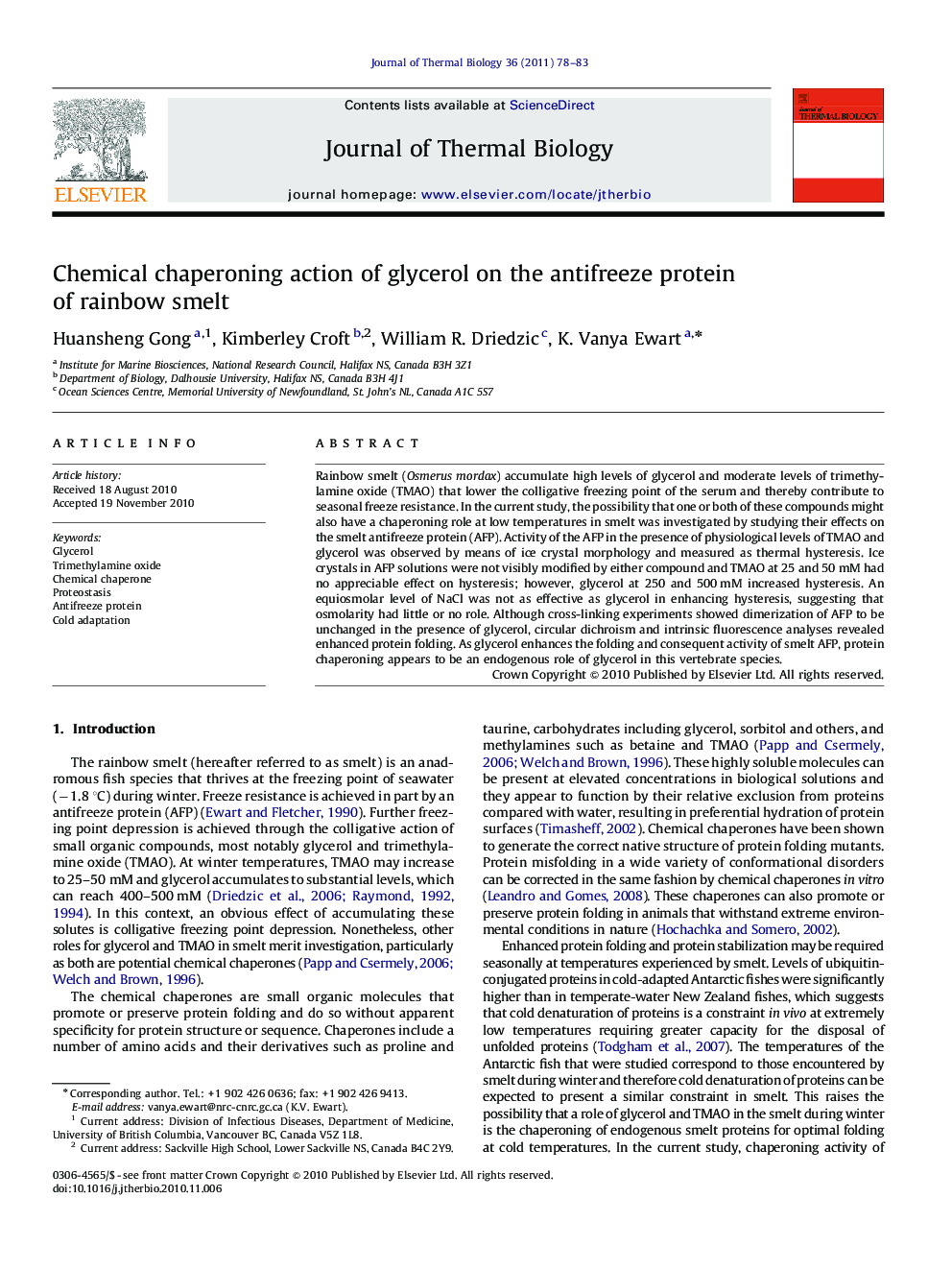| Article ID | Journal | Published Year | Pages | File Type |
|---|---|---|---|---|
| 2843254 | Journal of Thermal Biology | 2011 | 6 Pages |
Rainbow smelt (Osmerus mordax) accumulate high levels of glycerol and moderate levels of trimethylamine oxide (TMAO) that lower the colligative freezing point of the serum and thereby contribute to seasonal freeze resistance. In the current study, the possibility that one or both of these compounds might also have a chaperoning role at low temperatures in smelt was investigated by studying their effects on the smelt antifreeze protein (AFP). Activity of the AFP in the presence of physiological levels of TMAO and glycerol was observed by means of ice crystal morphology and measured as thermal hysteresis. Ice crystals in AFP solutions were not visibly modified by either compound and TMAO at 25 and 50 mM had no appreciable effect on hysteresis; however, glycerol at 250 and 500 mM increased hysteresis. An equiosmolar level of NaCl was not as effective as glycerol in enhancing hysteresis, suggesting that osmolarity had little or no role. Although cross-linking experiments showed dimerization of AFP to be unchanged in the presence of glycerol, circular dichroism and intrinsic fluorescence analyses revealed enhanced protein folding. As glycerol enhances the folding and consequent activity of smelt AFP, protein chaperoning appears to be an endogenous role of glycerol in this vertebrate species.
